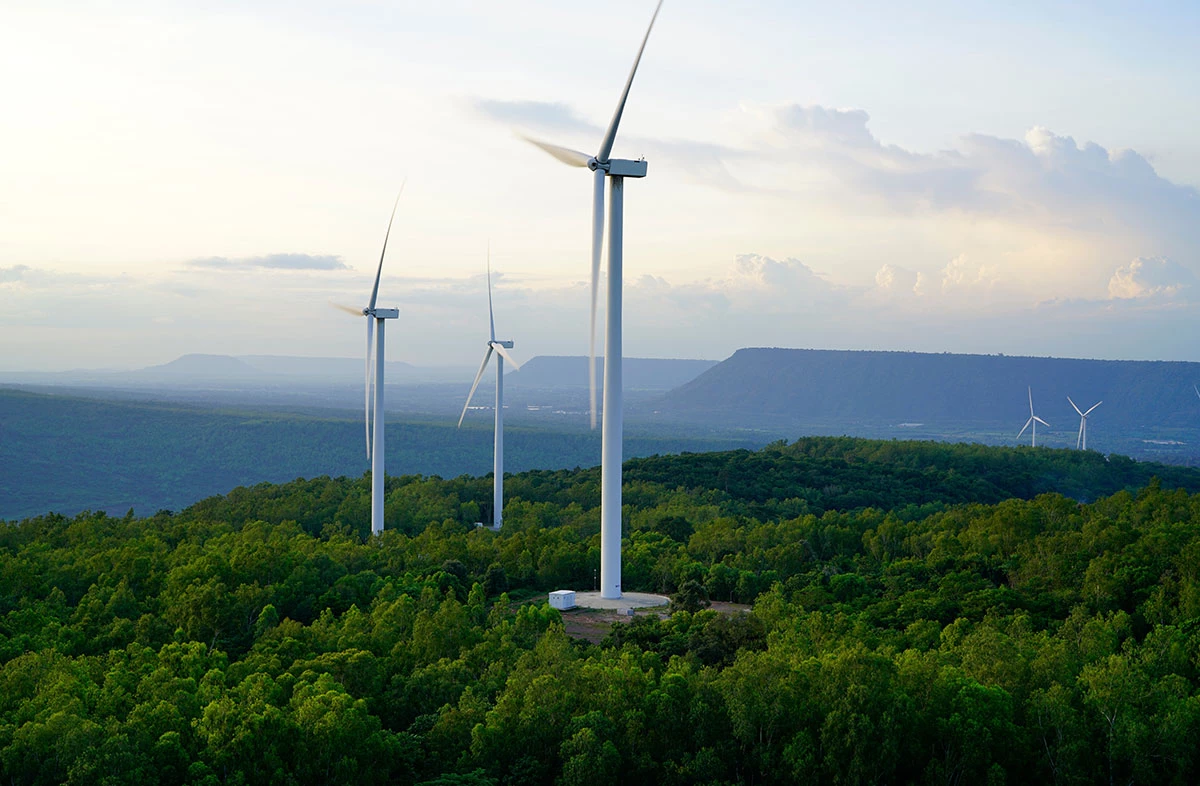Germany’s Power Market Bailed Out by Gas Plants as Wind Plunges
(Bloomberg) -- Germany added more onshore wind turbines in the past decade than any other European country, but a severe slump in output this month shows how the nation’s energy system is still at the mercy of the weather and its old fossil-fuel plants.
Wind speeds slumped about 12% in March from a year earlier, because of a North Atlantic ocean pattern that put Germany in an unusually long-lasting high-pressure bullseye. That sent average daily power generation from the nation’s thousands of turbines to its lowest level since 2016 and kept power prices elevated.
The slump highlights how once again Europe’s biggest power market has to be bailed out by its legacy coal and gas plants and how difficult it will be for Germany to substantially reduce emissions from its power sector. Not only are those stations more expensive to operate, they lead to more pollution.
“Low wind levels, despite higher installed capacity, means fossil-fuels have remained a leading component of the generation mix,” said Florence Schmit, an energy strategist at Rabobank. “German and by default neighboring European power markets are struggling” to see substantial declines, she said.
As a result, average day-ahead prices are 48% higher this month than a year ago, and almost at the same levels as the tail end of Europe’s energy crisis in 2023.

The low wind speeds have been driven by the path of air pressure linked to the North Atlantic Oscillation, a see-saw pattern located over the ocean between the Azores and Iceland, according to data from Atmospheric G2.
That path split in March, sending one low-pressure track south into Spain and another across Scandinavia, said Matt Dobson, a meteorologist with MetDesk. The split created a persistent area of high pressure over the UK and Germany, which smothered wind speeds. But it did create unseasonably warm, sunny conditions that led solar power output to surge in the region.
“March 2025 has certainly been remarkable for renewable generation over northwest and Central Europe,” Dobson said.
In the winter, similar high-pressure patterns also lead to low wind speeds and they become a magnet for low-lying clouds, he said. That’s a combination that can create “Dunkelflaute” conditions with low power generation from wind turbines and solar panels.

The shift to more renewables shows no sign of slowing down. Germany is set to add record amounts of wind capacity every year until 2030, according to BloombergNEF. But as nations continue to add renewable capacity, balancing the intermittent generation will be more of a challenge with storage not yet at scale to handle the swings in wind generation.
According to BNEF, wind levels held below the the 10-year average for 38 consecutive days, only rising above it on March 21. Based upon the atmospheric pressure trends, BNEF sees Germany’s wind deficit persisting into next month.
The deficit of wind boosted the reliance on gas-fired generation, which was up 51% in February year-on-year, said Jess Hicks, an analyst at BloombergNEF. The source has remained high in March too, even as solar power is rising in prominence, she said.
©2025 Bloomberg L.P.
KEEPING THE ENERGY INDUSTRY CONNECTED
Subscribe to our newsletter and get the best of Energy Connects directly to your inbox each week.
By subscribing, you agree to the processing of your personal data by dmg events as described in the Privacy Policy.
More renewables news

Musk Foundation-Backed XPRIZE Awards $100 Million for Carbon Removal

Nissan Commits Another $1.4 Billion to China With EVs in Focus

NextEra Energy reports 9% rise in adjusted earnings for Q1 2025 as solar and storage backlog grows

US Imposes Tariffs Up to 3,521% on Asian Solar Imports

India Battery-Swapping Boom Hinges on Deliveries and Rickshaws

China Reining In Smart Driving Tech Weeks After Fatal Crash

Japan Embraces Lab-Made Fuels Despite Costs, Climate Concerns

GE Vernova’s HA-powered Goi Thermal Power Station adds 2.3 GW to Japan

Used Solar Panels Sold on Facebook and eBay Have Cult Following
















